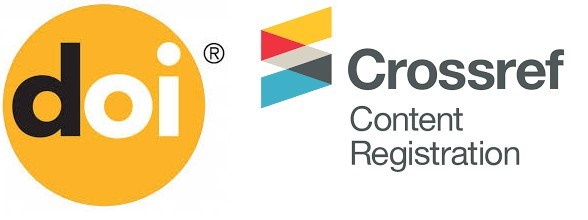Efektifitas Model Pembelajaran Jigsaw Berbasis Permainan Puzzle Untuk Meningkatkan Kemampuan Qira’ah di SMP Takhasus Al Qur’an Wonosobo
DOI:
https://doi.org/10.32699/liar.v6i1.2760Keywords:
Model of Learning;, Jigsaw Learning Models, Puzzle Game, Maharah QiraahAbstract
Maharah Qira'ah learning at Takhasus Al Qur'an Middle School uses a conventional learning model. There are many students who are passive when learning takes place, and lack participation, and the majority of students think learning Arabic is difficult. so it is necessary to apply a varied and enjoyable learning model. The use of a jigsaw learning model based on puzzle games is expected to be the solution. This study uses an experimental model that uses a one-group pretest-posttest design. The study used the subject of class VII students of SMP Takhasus Al Qur'an, totaling 63 students divided into two groups: control and experimental groups, then the experimental and control groups were subjected to a pretest and a final test in the form of written questions at the end (posttest). ). The research results will be analyzed, processed, and compared using the t-test and the N-Gain score test to obtain differences and increase in maharah qira'ah on research subjects. The results of this study indicate that: 1) in learning maharah qira'ah at Takhasus Al Qur'an Middle School using a jigsaw model based on a puzzle game there are steps that are used when learning takes place; 2) there is an increase in the qira'ah maharah of experimental class students by 0.51 which is included in the medium category; 3) there is a difference between the experimental class and the control class with tcount 5,19 > ttable1,671. So that Ha can be accepted and Ho can be rejected.
References
Akmalia, A., & Cahyani, N. D. (t.t.). STRATEGI PEMBELAJARAN JIGSAW DALAM PEMBELAJARAN MAHARAH QIRA’AH. 13.
Arsyad, A. (2003). Bahasa Arab dan metode pengajarannya. Pustaka Pelajar.
Berkah, J. (2018). PENGARUH METODE PEMBELAJARAN JIGSAW TERHADAP MINAT BELAJAR SEJARAH PESERTA DIDIK DI SMK KHARISMAWITA JAKARTA SELATAN. Jurnal Candrasangkala Pendidikan Sejarah, 4(1), 21. https://doi.org/10.30870/candrasangkala.v4i1.3431
Helmiati. (2012). Model Pembelajaran. Aswaja Pressindo.
Hermawan, A. (2011). Metodologi Pembelajaran Bahasa Arab,. PT Remaja Rosdakarya.
Hidayatullah, Moch. S. (2017). Cakrawala Linguistik Arab. PT Grasindo.
Khoiri, A. A., & Romadhon, I. F. (t.t.). ARABIC TEACHER: PEMBELAJARAN MODERN BAHASA ARAB BERBASIS E-LEARNING BAGI NON-NATIVE SPEAKER. 11.
Lubis, N. A., & Harahap, H. (t.t.). Pembelajaran Kooperatif Tipe Jigsaw. 7.
Mu’in, A. (2004). Analisis Kontrastif Bahasa Arab dan Bahasa Indonesia,. Al-Husna Baru.
Mulyaningsih, E., & Palangngan, S. T. (2021). PENGARUH PERMAINAN PUZZLE TERHADAP KEMAMPUAN MENGENAL LAMBANG BILANGAN PADA ANAK USIA DINI. AL-GURFAH: Journal of Primary Education, 1(1), 29–40.
Pane, A. (t.t.). URGENSI BAHASA ARAB; BAHASA ARAB SEBAGAI ALAT KOMUNIKASI AGAMA ISLAM. 2(1), 12.
Riduwan, A. (2007). Rumusan Data Dalam Aplikasi Statistika. Alfabeta.
Ritonga, A. W. (2020). Pengaruh Media Crossword Puzzle dalam Meningkatkan Maharah Qira’ah Siswa SMA Islam Sabilillah Malang Boarding School. Studi Arab, 11(2), 73–86. https://doi.org/10.35891/sa.v11i2.2354
Sudibyo, B. (t.t.). MENTERI PENDIDIKAN NASIONAL,. 11.
Sugiono. (2010). Metode Penelitian Kuantitatif Kualitatif Dan R & D (9 ed.). Alfabeta.
Sugiyono. (2012). Statistika untuk Penelitian.
Suprijono, A. (2015). Cooperative Learning Teori dan Aplikasi PAIKEM. Pustaka Pelajar.
Taubah, M. (2019). Maharah dan Kafa’ah Dalam Pembelajaran Bahasa Arab. Studi Arab, 10(1), 31–38. https://doi.org/10.35891/sa.v10i1.1765
Wardana, L. A. (2015). PENERAPAN MODEL PEMBELAJARAN JIGSAW UNTUK MENINGKATKAN KEMAMPUAN MEMBACA DALAM MEMAHAMI ISI CERITA PENDEK PADA SISWA KELAS V SDN MAYANGAN V KOTA PROBOLINGGO. 02(02), 9.
Downloads
Published
Issue
Section
License
Authors who publish with this journal agree to the following terms:
a. Authors retain copyright and grant the journal right of first publication with the work simultaneously licensed under a Creative Commons Attribution-ShareAlike 4.0 International License. that allows others to share the work with an acknowledgement of the work's authorship and initial publication in this journal.
b. Authors are able to enter into separate, additional contractual arrangements for the non-exclusive distribution of the journal's published version of the work (e.g., post it to an institutional repository or publish it in a book), with an acknowledgement of its initial publication in this journal.
c. Authors are permitted and encouraged to post their work online (e.g., in institutional repositories or on their website) prior to and during the submission process, as it can lead to productive exchanges, as well as earlier and greater citation of published work (See The Effect of Open Access).












